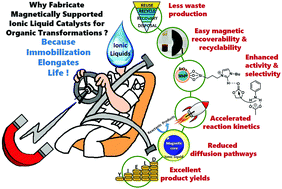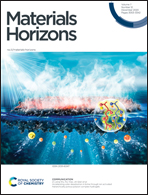Magnetically supported ionic liquids: a sustainable catalytic route for organic transformations
Abstract
From solvents to catalytic applications, ionic liquids have received burgeoning interest ever since their discovery. They belong to a class of salt-like materials that have unusually low melting temperatures. In recent years, the concept of supported ionic liquids has caught the eye of the scientific community due to their supremacy over their homogeneous counterparts. Amongst the available supports, magnetic materials have emerged as exceptional solid supports that provide proficient recovery and reusability features for ionic liquids. The present review exhaustively summarizes the most recent advances in the development of magnetically supported ionic liquids reported in the field of catalysis. This class of recyclable catalytic ionic liquids includes the immobilization of functionalized molten salts containing imidazolium, pyridinium, ammonium, piperidinium, phosphonium and many other precursors, including deep eutectic solvents, over magnetically modified nanocomposites such as core–shell nanoparticles, graphene oxide nanosheets, carbon nanotubes and mesoporous materials. Additionally, magnetically supported poly(ionic liquid) materials are explicitly documented. Concomitantly, synthetic applications of the fabricated materials are highlighted in the domain of catalysis, where both metal-free and metal-containing ionic liquids are personified as catalytic entities rather than green alternative media or supports for organo/metal catalysts.

- This article is part of the themed collection: Recent Review Articles


 Please wait while we load your content...
Please wait while we load your content...